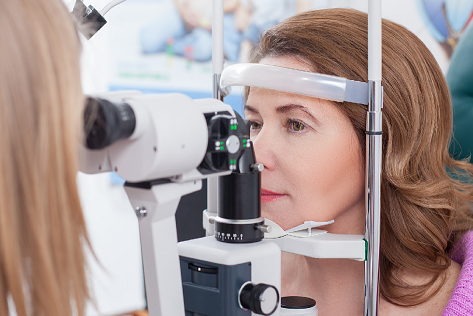Computer vision syndrome is an eye strain caused by the prolonged use of digital screens like computers, tablets, and smartphones. It causes certain vision and eye issues like eye strain, headache, eye fatigue, blurry vision, double vision, dry eyes, neck and shoulder pain, and itchy, red, or tearing eyes. You are at a higher risk of developing Beverly Hills computer vision problems if you frequently use digital screens. Having the condition does not mean you permanently stop using screens. Below are various tips that can help ease your computer vision syndrome.
Adjust your computer
Sitting too close to your computer can increase eye strain. Ensure you position your screen twenty to twenty-eight inches from your eyes. Also, position your computer slightly below your eye level, approximately four to five inches. Increasing your computer’s contrast, brightness, and font size can help make texts and images more visible and reading easier.
Blink frequently
Blinking spreads moisture and mucus across your eyes, preventing them from drying. Insufficient blinking can make your eyes dry and irritated. Spending time on your computer can make you blink less often than usual. Research shows that people blink sixty-six percent less when on digital screens. Ensure you blink as much as possible when using your computer.
Minimize screen glare
Screen glare occurs when light reflects off your screen. The light often comes from overhead lighting fixtures and nearby windows. You can eliminate or minimize glare by using light bulbs with lower wattage, dimming overhead lights, or adding a screen glare filter to your digital device. Closing blinds, shades, or curtains on windows can also help reduce screen glare.
Use the appropriate eyeglasses
If you wear eyeglasses, ensure the type you use is right for computer use. The wrong eyeglasses can make your eyes focus incorrectly, increasing your risk of eye strain and headaches. Your optician can recommend the right eyeglasses for computer use. If your glasses help address reading and distance issues, you may require a new type for viewing digital screens.
Adjust your posture
Eye strain can result from poor posture. Make sure you maintain the right posture while using your computer. Avoid hunching or slouching forward, sit upright with your ears aligned over your shoulders, and ensure you do have to lean forward to see your digital screen clearly. Your feet should be flat on the floor with your knees level or slightly higher than your hips.
Take regular breaks
Continuous use of digital screens is a common risk factor for computer vision syndrome. Resting your eyes for fifteen minutes every two hours with continuous computer use can minimize your risk. During the rest, move away from your screen and look at other objects closer or further than your computer. In each break, avoid focusing on other digital screens.
Computer vision syndrome often happens when you use digital screens for long periods. You can ease your condition by adjusting your computer and workspace to minimize glare, blinking frequently, adjusting your posture, and using the correct eyeglasses. Schedule an appointment at Beverly Hills Optometry: Advanced Dry Eye Center for computer vision syndrome treatment to restore your normal eye vision.
